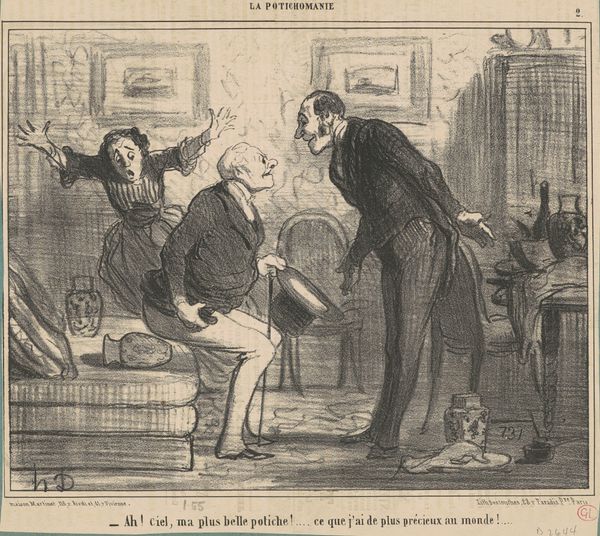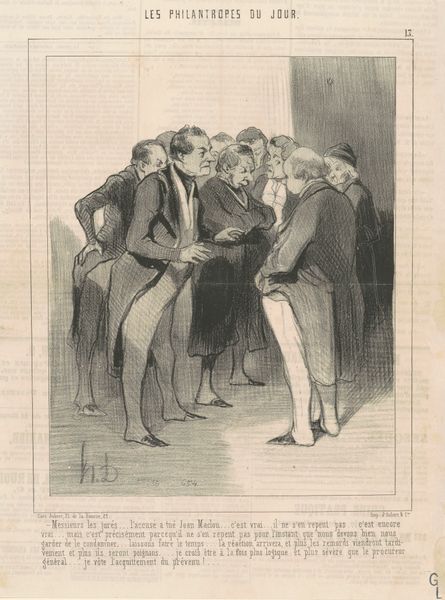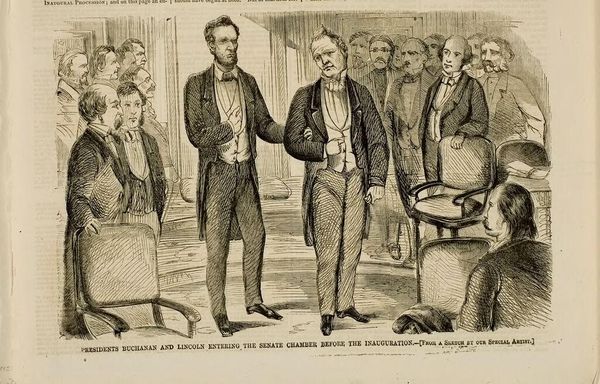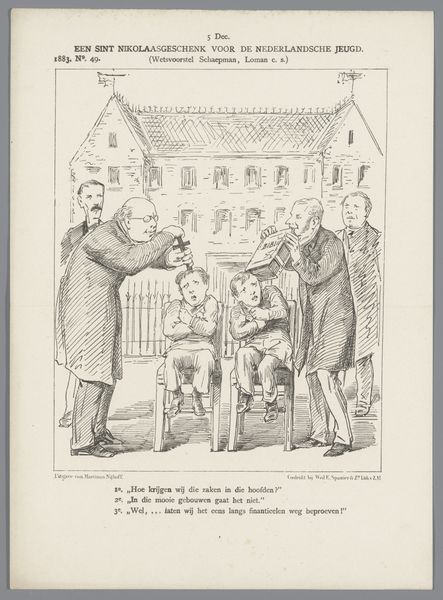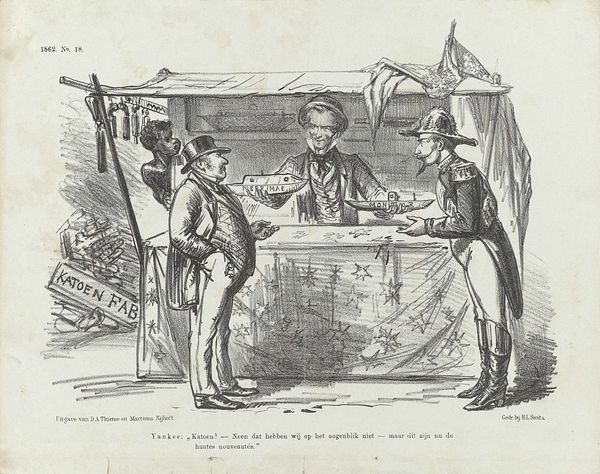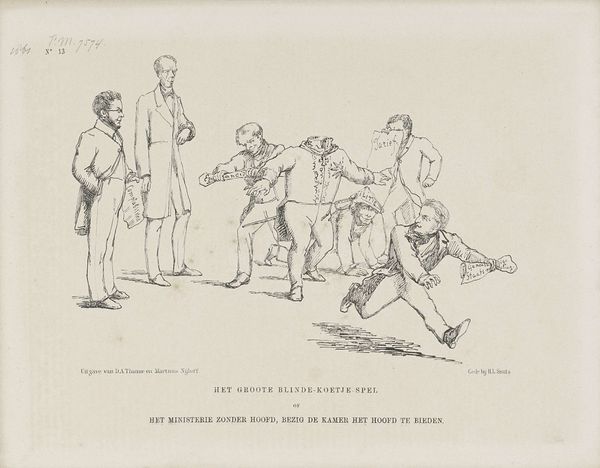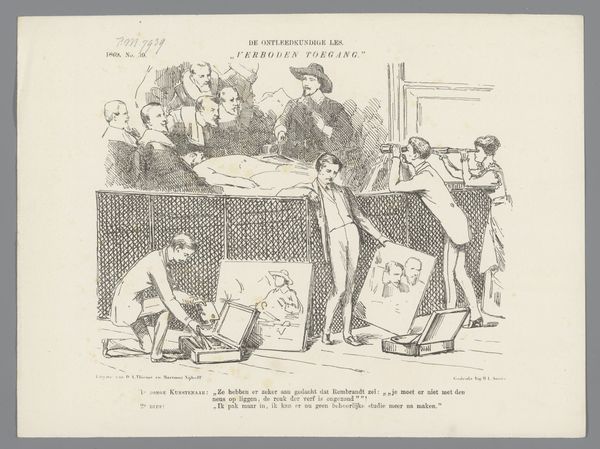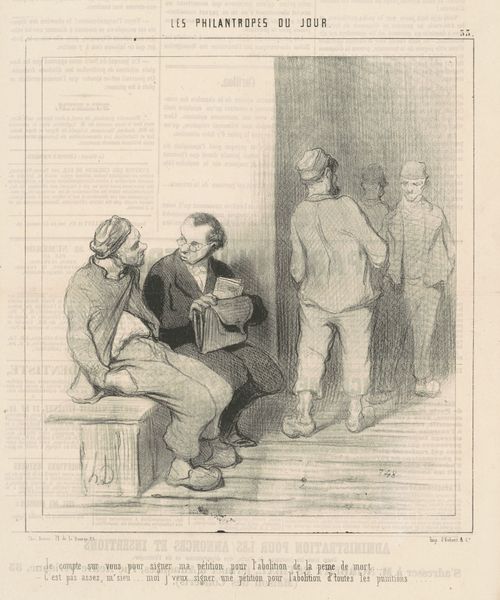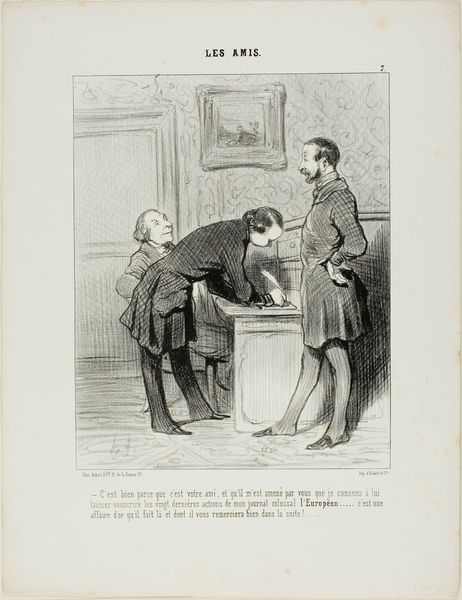
Spotprent op de oppostie van de Limburgse leden in de Eerste Kamer, 1865 1865
0:00
0:00
drawing, graphic-art, print, ink, pen
#
portrait
#
drawing
#
graphic-art
#
comic strip sketch
#
quirky sketch
#
dutch-golden-age
# print
#
caricature
#
figuration
#
personal sketchbook
#
ink
#
idea generation sketch
#
sketchwork
#
pen-ink sketch
#
line
#
sketchbook drawing
#
pen
#
cityscape
#
history-painting
#
storyboard and sketchbook work
#
sketchbook art
#
realism
#
initial sketch
Dimensions: height 215 mm, width 275 mm
Copyright: Rijks Museum: Open Domain
Curator: This work is titled "Spotprent op de oppostie van de Limburgse leden in de Eerste Kamer," which roughly translates to "Cartoon on the opposition of the Limburgian members in the Upper House." It dates to 1865. Editor: It strikes me as rather bleak. The monochrome palette and nervous lines give it a feeling of bureaucratic malaise. Are those politicians slumped in despair, or just deeply bored? Curator: I believe the artist, Johan Michaël Schmidt Crans, aimed to capture something of both. The caricatures hint at deeper cultural anxieties and possibly a jab at institutional inertia. The prominent rendering of 'BEGROOTING' - the Budget - suggests governmental wrangling. Editor: The budget, of course! So, these aren't just idle doodles, but a pointed critique aimed at public sentiment and the theater of governance? It reminds me of Honoré Daumier, wielding images as weapons. Curator: Precisely. Look at the symbolic language. The three gentlemen huddle together, apparently impervious to whatever's on offer, visually representing their political opposition. It's about public discourse and collective memory filtered through visual shorthand. Editor: But who are these characters, then, these three Limburgians so affected? This image, in effect, served as both a record and an influencer in the cultural debate of the time. The way these public figures are remembered would be shaped in part by pieces such as this. Curator: Precisely, though the specifics of their individual identities might be somewhat lost to modern viewers, their representative function remains potent. Editor: Looking again, there's almost a timeless quality here, despite the specific political context. The image speaks to the universal experience of bureaucratic wrangling and political dissatisfaction. And it reveals to us that this image would surely strike a similar nerve today! Curator: Absolutely, seeing how visual symbols can act as time capsules, encapsulating cultural continuity—or, perhaps, revealing that certain kinds of frustrations and power struggles, sadly, do not change as much as we'd like to think.
Comments
No comments
Be the first to comment and join the conversation on the ultimate creative platform.

